|
1974
|
The cube is invented
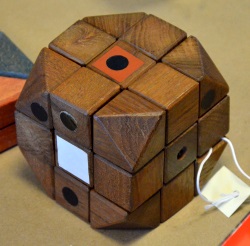 After many different prototypes and versions of the cube being created, in 1974 Erno Rubik finally finished his final prototype 3×3 Rubik’s Cube. The cube was fairly large and made out of wood, with corners that were cut down due to the size of the object. It was here where Rubik realised he couldn’t actually solve what he had created, and spent a month figuring out how to do so. After many different prototypes and versions of the cube being created, in 1974 Erno Rubik finally finished his final prototype 3×3 Rubik’s Cube. The cube was fairly large and made out of wood, with corners that were cut down due to the size of the object. It was here where Rubik realised he couldn’t actually solve what he had created, and spent a month figuring out how to do so.
|
|
1975
|
Patent obtained
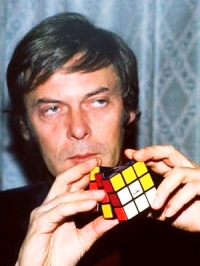 In 1975 Rubik received a patent for his “Magic Cube” in Hungary. In 1975 Rubik received a patent for his “Magic Cube” in Hungary.
The cube kept this name for the 5 years following, before being renamed after its inventor.
|
|
1977
|
Test batches released in Hungary
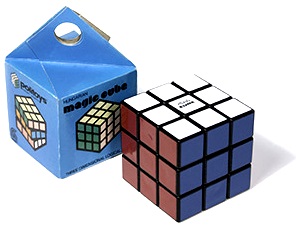 The cube was released for the first time in Budapest toy shops in late 1977. The version that was released meant the cube could not easily be pulled apart or broken, ideal qualities of children’s toys. The cube was released for the first time in Budapest toy shops in late 1977. The version that was released meant the cube could not easily be pulled apart or broken, ideal qualities of children’s toys.
|
|
1979
|
Worldwide Distribution deal signed
 It took several years before the cube was actually released worldwide, a total of 4 between patent receipt and release. This was due to “Iron Curtain” that separated Europe prior to the decline of communism at the time, and this made any worldwide distribution difficult. It took several years before the cube was actually released worldwide, a total of 4 between patent receipt and release. This was due to “Iron Curtain” that separated Europe prior to the decline of communism at the time, and this made any worldwide distribution difficult.
|
|
1980
|
The World sees the cube
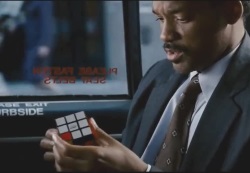 In early 1980, the Rubik’s Cube made its international debut in toy fairs across the world. It had to be changed slightly as the West had different regulations in regards to packaging and safety specifications. During this time, the name was changed to credit the inventor, and thus the Rubik’s Cube was officially born. In early 1980, the Rubik’s Cube made its international debut in toy fairs across the world. It had to be changed slightly as the West had different regulations in regards to packaging and safety specifications. During this time, the name was changed to credit the inventor, and thus the Rubik’s Cube was officially born.
In the same year, David Singmaster published the first layer-by-layer method, a method which is still used by many puzzlers and beginner speedcubers even today.
|
|
1981
|
International Success
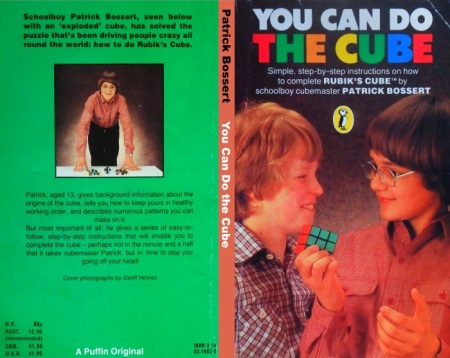 In 1980 and 1981, the Rubik’s Cube received the UK Toy of the Year award, and in the first 3 years of its release it sold 100 million units. The cube today has sold over 3 times that figure, making it the best-selling toy of all time. In 1980 and 1981, the Rubik’s Cube received the UK Toy of the Year award, and in the first 3 years of its release it sold 100 million units. The cube today has sold over 3 times that figure, making it the best-selling toy of all time.
Patrick Bossert also saw success in 1981, as his book entitled “You Can Do The Cube” which taught the reader how to solve their own cube sold 1.5 million copies.
|
|
1982
|
The speed picks up
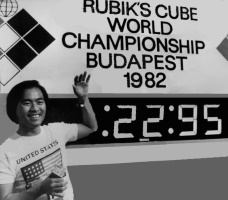 In 1982, the first Rubik’s Cube World Championship was held in the capital of Hungary. 20 competitors, all selected from smaller competitions in their home countries, came together to solve the Rubik’s Cube as fast as possible. The victor was Minh Thai, an American teenager, who solved the cube in 22.95 seconds. He then later published a book entitled “The Winning Solution”, which also taught others how to solve the Rubik’s Cube. The Ortega Corners-First method that is still used by some today was based off of Thai’s book. In 1982, the first Rubik’s Cube World Championship was held in the capital of Hungary. 20 competitors, all selected from smaller competitions in their home countries, came together to solve the Rubik’s Cube as fast as possible. The victor was Minh Thai, an American teenager, who solved the cube in 22.95 seconds. He then later published a book entitled “The Winning Solution”, which also taught others how to solve the Rubik’s Cube. The Ortega Corners-First method that is still used by some today was based off of Thai’s book.
During the next two decades, as the World began to move on to different toys and inventions (especially with the daily technological advances that hooked the attention of the World), the Rubik’s Cube faded from the public view. It still remained on the shelves and still sold incredibly well, but the hype that originated back in its starting years had pretty much died off. The cube did make occasional appearances in the news, however, such as the Masterpiece Cube that was created in 1995 by Diamond Cutters Int. Valued at $1.5 million, it is the most expensive Rubik’s Cube in the World. However, as the Rubik’s Cube became less of a common sight in Christmas wish lists, speedcubing was born and began to thrive.
|
|
1997
|
The Fridrich Method
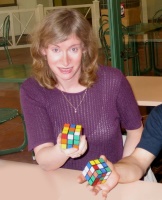 In 1997, Jessica Fridrich published her methods for solving the Rubik’s Cube online. The Fridrich method (also known as CFOP, an acronym for the stages of the puzzle) is regarded today as the best speedcubing method, and the world record single and average times have been held by Fridrich solvers for many years, despite Fridrich herself estimating that the method would not be efficient for consistent times under 13 seconds. In 1997, Jessica Fridrich published her methods for solving the Rubik’s Cube online. The Fridrich method (also known as CFOP, an acronym for the stages of the puzzle) is regarded today as the best speedcubing method, and the world record single and average times have been held by Fridrich solvers for many years, despite Fridrich herself estimating that the method would not be efficient for consistent times under 13 seconds.
|
|
2003
|
The World Cube Association
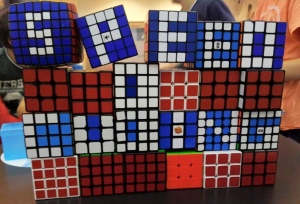 In 2003, Ron Van Bruchem and Tyson Mao founded the World Cube Association. This was the first official organisation that would be responsible for the running of official speedcubing competitions and monitoring of national and international achievements. The WCA has helped grow speedcubing and has taken the hobby to many new countries. The WCA is today recognised as the official speedcubing association and any potential World Records must be set under WCA regulations and delegation before they are recognised. In 2003, Ron Van Bruchem and Tyson Mao founded the World Cube Association. This was the first official organisation that would be responsible for the running of official speedcubing competitions and monitoring of national and international achievements. The WCA has helped grow speedcubing and has taken the hobby to many new countries. The WCA is today recognised as the official speedcubing association and any potential World Records must be set under WCA regulations and delegation before they are recognised.
In this year, the second World Championship took place. Dan Knight was the victor this time, winning with a time of 20.00 seconds.
|
|
2005
|
25 years of the Rubik’s Cube
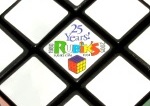 The cube celebrated its 25th birthday in 2005. A special edition cube packaging was created to celebrate. Also during this year, the third World Championship took place. In this one, Jeans Pons won with a time of 15.10 seconds. The cube celebrated its 25th birthday in 2005. A special edition cube packaging was created to celebrate. Also during this year, the third World Championship took place. In this one, Jeans Pons won with a time of 15.10 seconds.
|
|
2012
|
Ruwix
 We launch Ruwix, the Cubing Wiki to popularize cubing and twisty puzzling. We publish puzzle tutorials, free online cubing tools and related articles. Soon Ruwix becomes a leading cubing site, teaching thousands of people every day how to solve the Rubik's Cube. We launch Ruwix, the Cubing Wiki to popularize cubing and twisty puzzling. We publish puzzle tutorials, free online cubing tools and related articles. Soon Ruwix becomes a leading cubing site, teaching thousands of people every day how to solve the Rubik's Cube.
|
|
2014
|
40th year since the Rubik’s Cube’s invention
 In 2014, the Rubik’s Cube celebrated 40 years since its invention back in 1974. An interactive Rubik’s Cube doodle was released on the front page of Google on the day, and the Beyond Rubik’s Cube Exhibition was opened at the Liberty Science Centre in New Jersey, the same venue as the 2014 US National Rubik’s Cube competition. The exhibition displayed everything cube related from robots that could solve the puzzle to original wooden prototypes from Rubik himself. In 2014, the Rubik’s Cube celebrated 40 years since its invention back in 1974. An interactive Rubik’s Cube doodle was released on the front page of Google on the day, and the Beyond Rubik’s Cube Exhibition was opened at the Liberty Science Centre in New Jersey, the same venue as the 2014 US National Rubik’s Cube competition. The exhibition displayed everything cube related from robots that could solve the puzzle to original wooden prototypes from Rubik himself.
|
|
2015
|
The first Sub-5
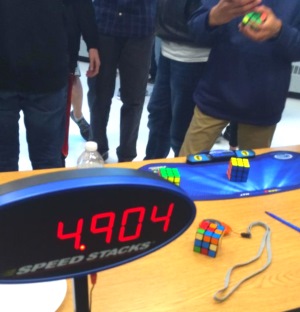 Lucas Etter broke new World Record for the Rubik's Cube single with a 4.90 solution time which is the first sub-5 record ever measured on an official WCA competition. Lucas Etter broke new World Record for the Rubik's Cube single with a 4.90 solution time which is the first sub-5 record ever measured on an official WCA competition.
|
|
2018
|
The first Sub-5
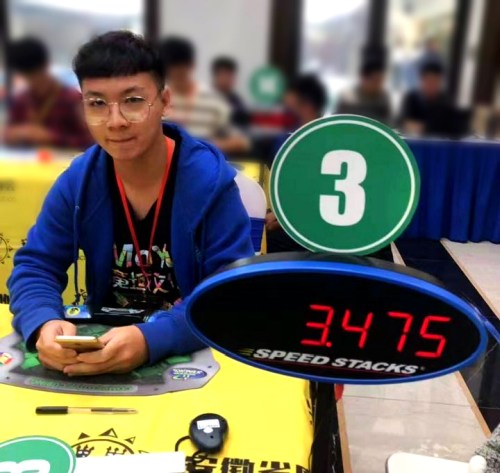 Yusheng Du shaved off 0.75 seconds from the record of Feliks Zemdegs setting the new (unbeatable??) Rubik's Cube single World Record at an amazing 3.47 seconds. Yusheng Du shaved off 0.75 seconds from the record of Feliks Zemdegs setting the new (unbeatable??) Rubik's Cube single World Record at an amazing 3.47 seconds.
|

 In 1975 Rubik received a patent for his “Magic Cube” in Hungary.
In 1975 Rubik received a patent for his “Magic Cube” in Hungary.  The cube was released for the first time in Budapest toy shops in late 1977. The version that was released meant the cube could not easily be pulled apart or broken, ideal qualities of children’s toys.
The cube was released for the first time in Budapest toy shops in late 1977. The version that was released meant the cube could not easily be pulled apart or broken, ideal qualities of children’s toys. It took several years before the cube was actually released worldwide, a total of 4 between patent receipt and release. This was due to “Iron Curtain” that separated Europe prior to the decline of communism at the time, and this made any worldwide distribution difficult.
It took several years before the cube was actually released worldwide, a total of 4 between patent receipt and release. This was due to “Iron Curtain” that separated Europe prior to the decline of communism at the time, and this made any worldwide distribution difficult. In early 1980, the Rubik’s Cube made its international debut in toy fairs across the world. It had to be changed slightly as the West had different regulations in regards to packaging and safety specifications. During this time, the name was changed to credit the inventor, and thus the Rubik’s Cube was officially born.
In early 1980, the Rubik’s Cube made its international debut in toy fairs across the world. It had to be changed slightly as the West had different regulations in regards to packaging and safety specifications. During this time, the name was changed to credit the inventor, and thus the Rubik’s Cube was officially born. In 1980 and 1981, the Rubik’s Cube received the UK Toy of the Year award, and in the first 3 years of its release it sold 100 million units. The cube today has sold over 3 times that figure, making it the best-selling toy of all time.
In 1980 and 1981, the Rubik’s Cube received the UK Toy of the Year award, and in the first 3 years of its release it sold 100 million units. The cube today has sold over 3 times that figure, making it the best-selling toy of all time. In 1982, the first Rubik’s Cube World Championship was held in the capital of Hungary. 20 competitors, all selected from smaller competitions in their home countries, came together to solve the Rubik’s Cube
In 1982, the first Rubik’s Cube World Championship was held in the capital of Hungary. 20 competitors, all selected from smaller competitions in their home countries, came together to solve the Rubik’s Cube  In 1997, Jessica Fridrich published her methods for solving the Rubik’s Cube online. The
In 1997, Jessica Fridrich published her methods for solving the Rubik’s Cube online. The  In 2003, Ron Van Bruchem and Tyson Mao founded the
In 2003, Ron Van Bruchem and Tyson Mao founded the  The cube celebrated its 25th birthday in 2005. A special edition cube packaging was created to celebrate. Also during this year, the third World Championship took place. In this one, Jeans Pons won with a time of 15.10 seconds.
The cube celebrated its 25th birthday in 2005. A special edition cube packaging was created to celebrate. Also during this year, the third World Championship took place. In this one, Jeans Pons won with a time of 15.10 seconds. We launch
We launch  In 2014, the Rubik’s Cube celebrated 40 years since its invention back in 1974. An
In 2014, the Rubik’s Cube celebrated 40 years since its invention back in 1974. An  Lucas Etter broke new World Record for the Rubik's Cube single with a
Lucas Etter broke new World Record for the Rubik's Cube single with a 